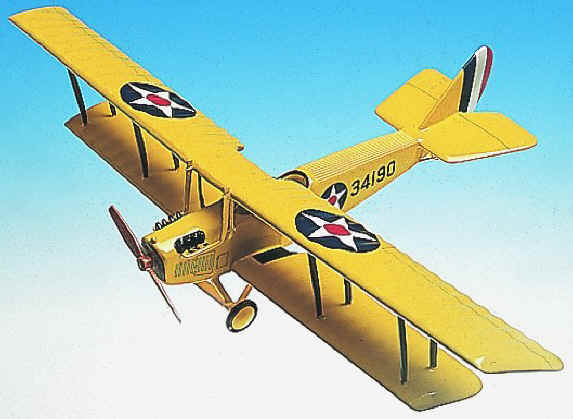|
|
|

|
Curtis JN-4 Jenny,
Trainer |
 |
The Curtiss "Jenny" America's most famous World War I
airplane, was developed by combining the best features of the Curtiss
"J" and "N" models. The model J made in 1914
flew reconnaissance against Pancho Villa's Mexican revolutionaries.
A 1915 version, the JN-3, was used in 1916 during Pershing's Punitive
Expedition into Mexico. Its poor performance, however, made it
unsuited for field operations. The JN-3 was modified in 1916 to
improve its performance and redesignated the JN-4, affectionately
nicknamed the "Jenny."
The twin seat arrangement was
ideal for training purposes, so it was generally used for primary flight
training; some were equipped with machine guns and bomb racks for
advanced training. With America's entry into World War I on April 6,
1917, the Signal Corps began ordering large quantities of JN-4s, and by
the time production was terminated after the Armistice, more than 6,000
had been delivered, the majority of them JN-4D. After World War I,
hundreds were sold on the civilian market. The airplane soon became the
mainstay of the "Barnstormer" of the 1920s.
Availability, low cost, and forgiving handling characteristics made it
very popular. Appearance throughout the country awakened people to
aviation; became part of American folklore in early 20s. On the other
hand, large number and low cost of surplus Jennies effectively killed
the market for new aircraft until mid-20s. New models did not gain a
foothold until supply of surplus aircraft exhausted. Jennies were
still being flown in the 1930s. |
|

|
Curtis JN-4 Jenny,
Trainer
Standard
Series. 1/32nd scale. 16.6" wingspan x 10.75 length.
No. ACA1D-ST. Only $139.95 |
|
